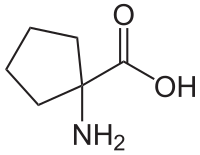
Photo from wikipedia
Posttranscriptional modification of mRNAs plays an important role in establishing the functional diversity of the proteome. The m6A modification is found in many species of RNA, including tRNA, mRNA, rRNA, and long… Click to show full abstract
Posttranscriptional modification of mRNAs plays an important role in establishing the functional diversity of the proteome. The m6A modification is found in many species of RNA, including tRNA, mRNA, rRNA, and long noncoding RNAs. The physiological role of m6A modification of RNA is not fully explored and is a topic of current research. It is predicted that the major effect of m6A modification of mRNAs is on its stability and/or translation. The global changes in m6A levels in total RNA or particular species of RNAs can be measured by dot blot analysis using m6A specific antibodies or using mass spectrometry following chromatographic separation. The dot blot method for detection of global m6A changes is a relatively straightforward method to quantitate m6A modification but suffers from low sensitivity when the fraction of m6A-modified RNA is small in analyzed samples. Here, we describe a modified dot blot method that is sensitive and quantitative for detecting m6A-modified RNA by adding an immunoprecipitation step to enrich for m6A-modified RNA.
Journal Title: Methods in molecular biology
Year Published: 2019
Link to full text (if available)
Share on Social Media: Sign Up to like & get
recommendations!